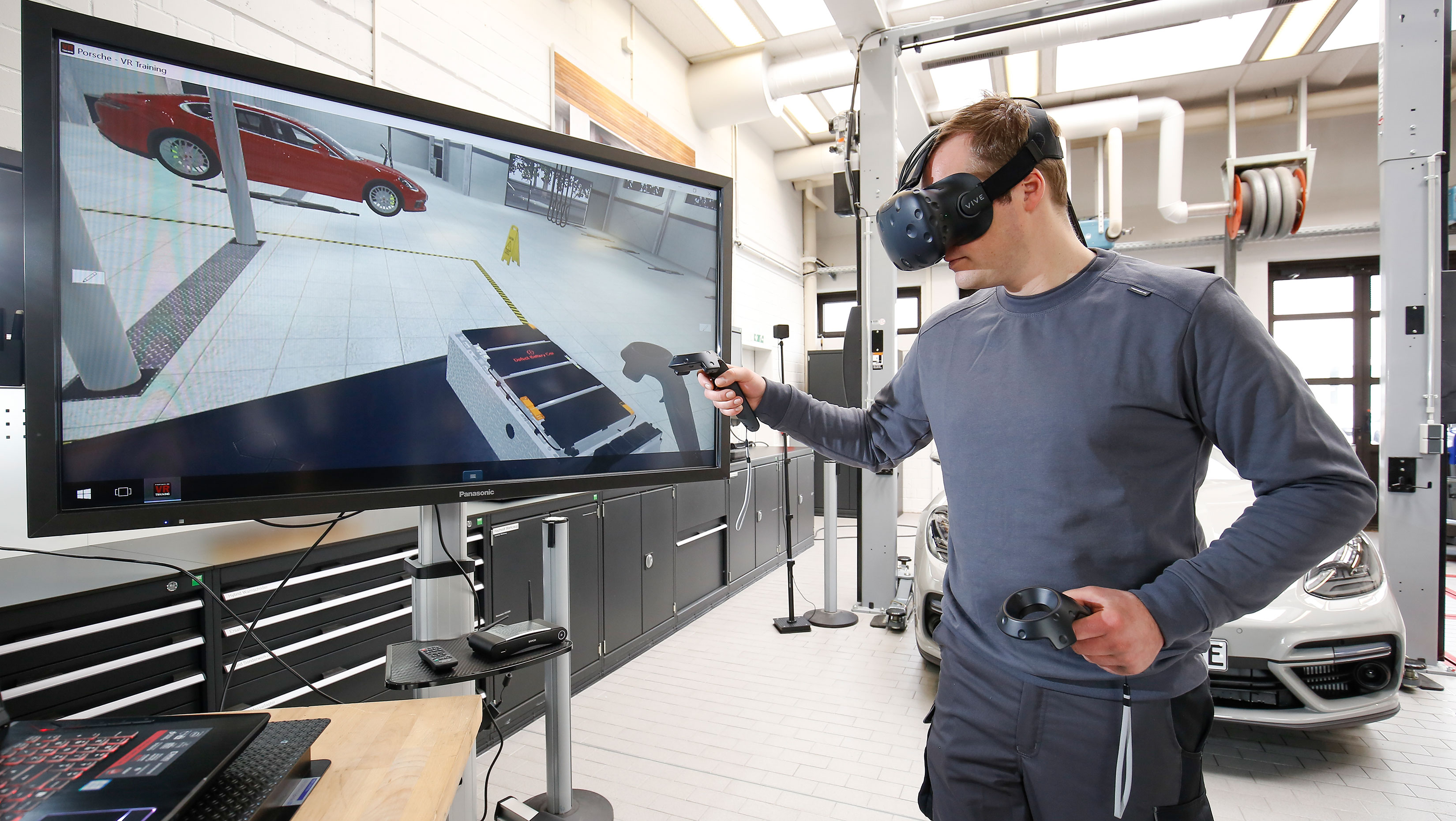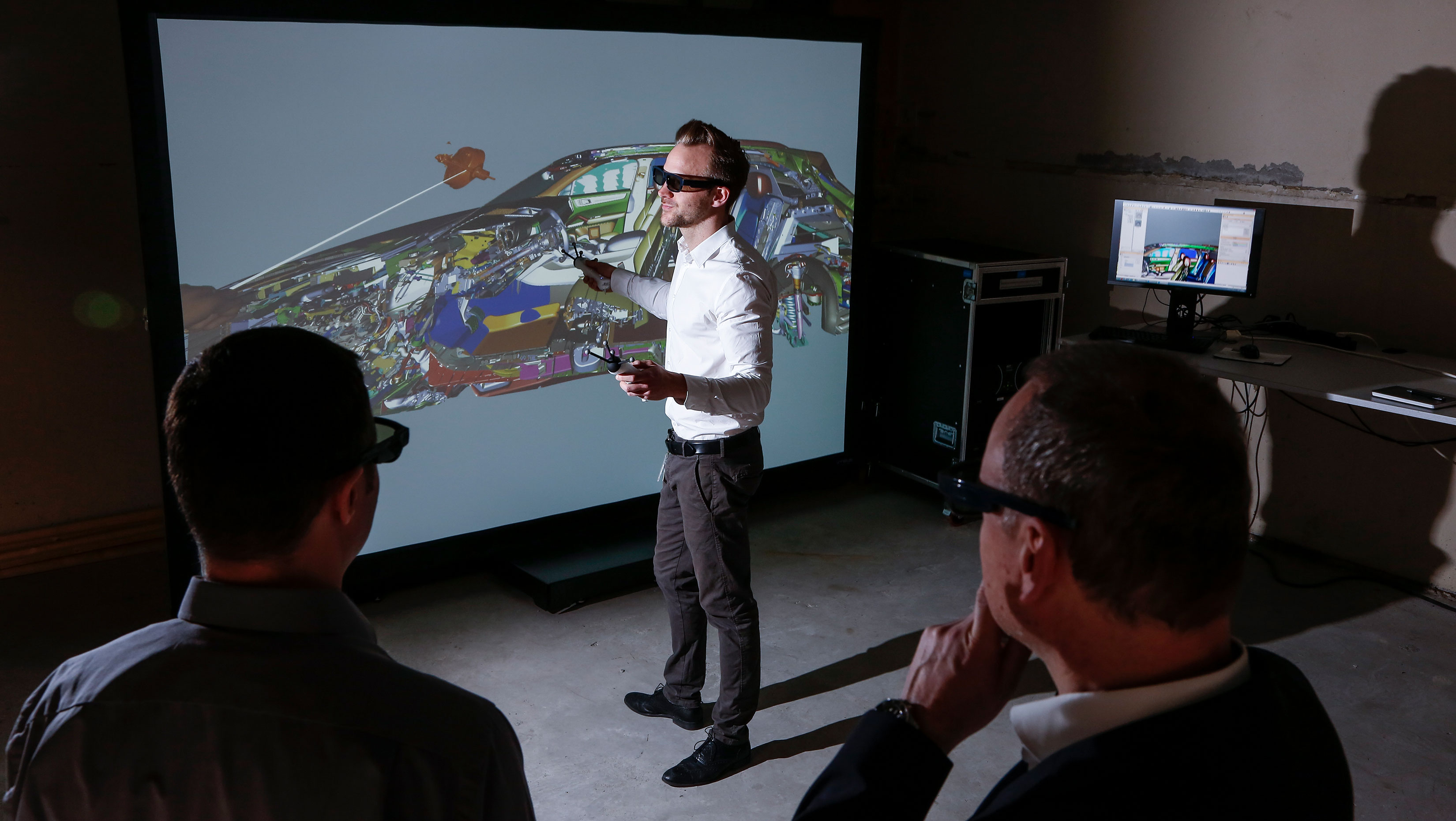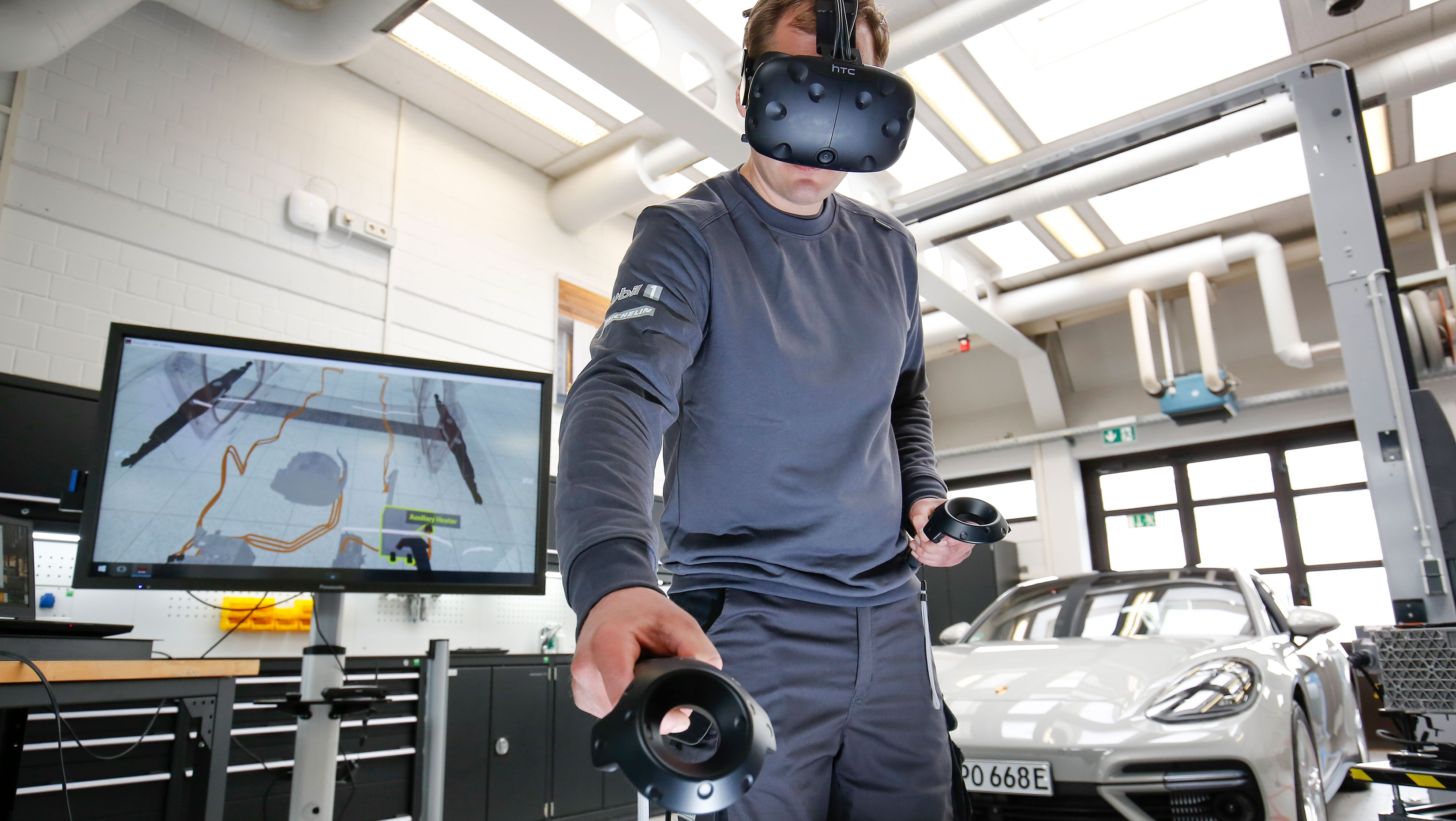Alice in Virtual Wonderland
Now it’s time to change both the subject and the location. Special glasses – along with animated graphics – play a key role somewhere else in Porsche, namely the After Sales Department, Technical Service, Product Engineering. Jonas Wutgen is the man responsible. With one hand resting on his computer mouse, he concentrates on the screen in front of him. He’s waiting for the data to load. A colorful cutaway model of a Cayenne appears on the “Power Wall” in front of him, which measures two by three meters. It’s time to get started by putting on special shutter glasses and taking hold of the controller. With just a few gestures, the Project Manager rotates the 3-D model so that the side of the vehicle is visible. “Every part is reproduced here digitally – right down to individual bolts.” says Wutgen, emphasizing the level of detail as he carefully navigates his way to the engine compartment. “We can simply select particular components and find out whether they can be dismantled or whether other components are in the way.” Technicians can use the virtual Cayenne to check whether there will be space in their real-life workshop to remove and install parts safely and to maneuver the necessary tools.
Assembly and disassembly tests used to have one thing in common – they involved hardware. After Sales employees could only practice the sequences of movements they would need for repair jobs when a prototype became available. And there was a problem: Over the years, the number of prototypes dropped, and even these were not always available at the right time. “We’re currently transitioning from hardware to software,” explains Wutgen, and demonstrates just how this happens on the Power Wall. “Repairs to individual vehicle components can now be practiced using 3-D data, without the need for a real-life prototype.”
Thomas Eckert, Manager Technical Service – Product Engineering, sums up the key advantage of this digitized process: “The digital simulation methods available to us with the Power Wall mean that we can intervene in the product development process at an earlier stage and, if necessary, work together with our colleagues in Development to make any changes.” Another advantage of digital prototypes over the real-life counterparts of the past is that everything is just a few clicks away – any configuration of equipment and any engine, for either right-hand or left-hand drive.
Virtual assembly and disassembly simulations on the Power Wall are just one aspect of working with 3-D data. After Sales employees meet on a regular basis in ‘tandem teams’ to discuss repair concepts and the repair instructions partly based on these concepts. There are also plans to use the Power Wall for cross-Group and cross-brand studies in future. The highly detailed data for the 3-D models is provided by the Weissach-based Virtual Vehicle department. Since the end of 2017, employees in Product Engineering After Sales have been using 3-D technology for sales purposes–initially in a pilot project, before it becomes a standard feature of the development process for future series-production vehicles from the second half of 2018.



